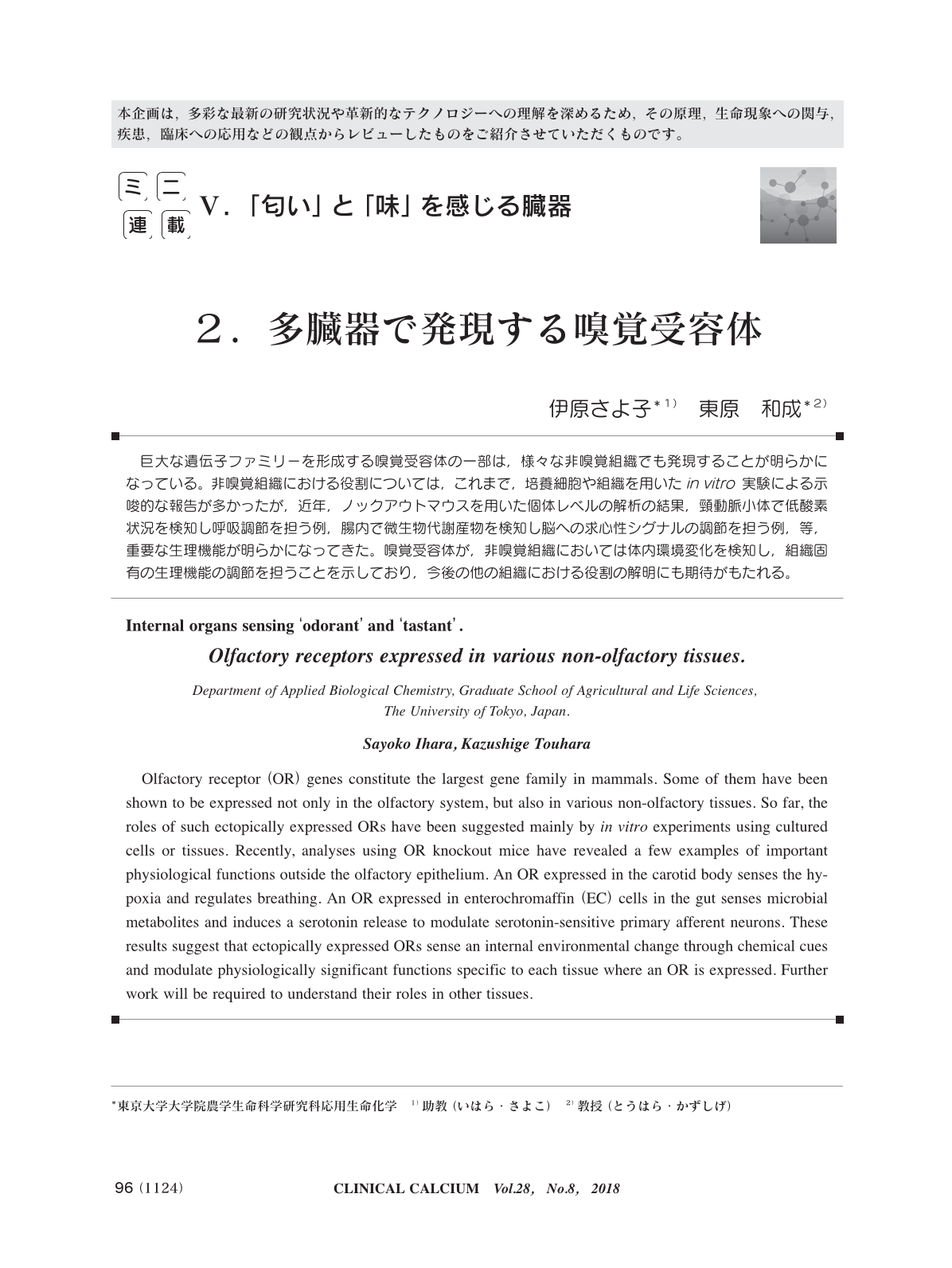Japanese
English
- 有料閲覧
- Abstract 文献概要
- 1ページ目 Look Inside
- 参考文献 Reference
巨大な遺伝子ファミリーを形成する嗅覚受容体の一部は,様々な非嗅覚組織でも発現することが明らかになっている。非嗅覚組織における役割については,これまで,培養細胞や組織を用いたin vitro実験による示唆的な報告が多かったが,近年,ノックアウトマウスを用いた個体レベルの解析の結果,頸動脈小体で低酸素状況を検知し呼吸調節を担う例,腸内で微生物代謝産物を検知し脳への求心性シグナルの調節を担う例,等,重要な生理機能が明らかになってきた。嗅覚受容体が,非嗅覚組織においては体内環境変化を検知し,組織固有の生理機能の調節を担うことを示しており,今後の他の組織における役割の解明にも期待がもたれる。
Olfactory receptor(OR)genes constitute the largest gene family in mammals. Some of them have been shown to be expressed not only in the olfactory system, but also in various non-olfactory tissues. So far, the roles of such ectopically expressed ORs have been suggested mainly by in vitro experiments using cultured cells or tissues. Recently, analyses using OR knockout mice have revealed a few examples of important physiological functions outside the olfactory epithelium. An OR expressed in the carotid body senses the hypoxia and regulates breathing. An OR expressed in enterochromaffin(EC)cells in the gut senses microbial metabolites and induces a serotonin release to modulate serotonin-sensitive primary afferent neurons. These results suggest that ectopically expressed ORs sense an internal environmental change through chemical cues and modulate physiologically significant functions specific to each tissue where an OR is expressed. Further work will be required to understand their roles in other tissues.



